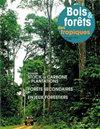Dynamics of Pinus wood prices for different timber assortments: comparison of stochastic processes
IF 0.6
4区 农林科学
Q3 FORESTRY
引用次数: 5
Abstract
Understanding the dynamics of market prices for Pinus wood is a prerequisite for strategic decisions concerning forest investment plans since, in terms of the market, the exogenous risk to a project depends on timber assortments. The stochastic process that represents the best way of pricing the underlying asset therefore needs to be known. This study set out to compare Fractional Brownian Motion and Geometric Brownian Motion, through econometric tests, to understand the stochastic model that best represents the price behaviour of Pinus wood from planted forests in the state of Santa Catarina, Brazil, for the pricing of the underlying asset and valuation of the real options intrinsic to forest investment projects. The time series of prices, for the period from June 2017 to July 2019, relate to three assortments of Pinus wood used for multiple products. The recommended econometric tests to analyse the time series were for normality of the data, trend, autocorrelation, stationarity and fractional differential estimation. The time series were then modelled by means of stochastic processes in line with the econometric tests. The time series showed normal behaviour and indicated the presence of a positive trend and non-stationarity in the data. In addition, a true long memory was found in all series. Fractional Brownian Motion proved to be the most suitable stochastic process for modelling the prices of three forest timber assortments, given the non-stationary characteristics and true long memory of the time series for Pinus wood prices.不同木材品种松木价格的动态:随机过程的比较
了解松木市场价格的动态是有关森林投资计划的战略决策的先决条件,因为就市场而言,项目的外生风险取决于木材种类。因此,我们需要了解代表标的资产最佳定价方式的随机过程。本研究通过计量经济学测试,比较分数布朗运动和几何布朗运动,以了解最能代表巴西圣卡塔琳娜州人工林松树木材价格行为的随机模型,用于森林投资项目固有的标的资产定价和实物期权估值。2017年6月至2019年7月期间的价格时间序列涉及用于多种产品的三种松木。分析时间序列的推荐计量检验是数据的正态性、趋势性、自相关性、平稳性和分数微分估计。然后,根据计量经济学检验,采用随机过程对时间序列进行建模。时间序列表现出正常的行为,表明数据中存在正趋势和非平稳性。此外,在所有系列中都发现了真正的长记忆。分数布朗运动被证明是最适合模拟三种森林木材品种价格的随机过程,因为松木木材价格的时间序列具有非平稳特征和真正的长记忆。
本文章由计算机程序翻译,如有差异,请以英文原文为准。
求助全文
约1分钟内获得全文
求助全文
来源期刊

Bois et Forets Des Tropiques
FORESTRY-
CiteScore
1.50
自引率
16.70%
发文量
31
审稿时长
>12 weeks
期刊介绍:
In 1947, the former Tropical Forest Technical Centre (CTFT), now part of CIRAD, created the journal Bois et Forêts des Tropiques. Since then, it has disseminated knowledge and research results on forests in intertropical and Mediterranean regions to more than sixty countries. The articles, peer evaluated and reviewed, are short, synthetic and accessible to researchers, engineers, technicians, students and decision-makers. They present original, innovative research results, inventions or discoveries. The journal publishes in an international dimension. The topics covered are of general interest and are aimed at an informed international audience.
 求助内容:
求助内容: 应助结果提醒方式:
应助结果提醒方式:


